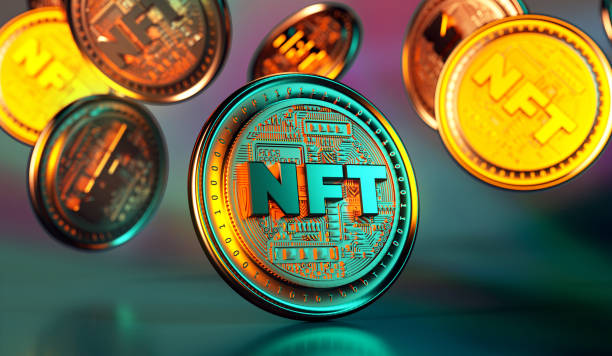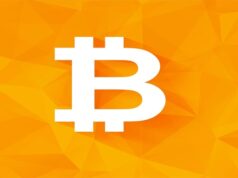
Introduction
The concept of the metaverse, a virtual universe where people can interact with digital environments and each other, has been gaining significant attention in recent years. From gaming and social media to commerce and education, the metaverse has the potential to transform various industries and change the way we live and work.
As the metaverse expands, so does the need for a new economic system that can facilitate transactions and value exchange in this virtual world. This is where digital tokenomics and non-fungible tokens (NFTs) come in. Digital tokenomics refers to the economics of digital assets, such as cryptocurrencies and tokens, while NFTs are unique digital assets that can represent anything from artwork to music to virtual real estate.
In this article, we will explore how digital tokenomics and NFTs can help unlock the power of the metaverse for your clients. We will discuss what they are, how they work, and their potential impact on the metaverse economy. We will also provide insights on how financial advisors can incorporate these concepts into their practice and help clients navigate this emerging landscape.
Understanding Digital Tokenomics
Digital tokenomics is the study of the economics of digital assets, such as cryptocurrencies and tokens. In the metaverse, tokens can represent anything from virtual currency to access rights to digital assets.
Tokens are digital assets that can be traded on blockchain networks through blockchain development, and they are becoming increasingly important in the world of business. They are often used as a means of exchange, similar to traditional currency, but they can also have other functions, such as governance or access control. Tokens can be divided into two main categories: fungible and non-fungible.
Fungible tokens are interchangeable and have the same value as other tokens of the same type. For example, Bitcoin is a fungible token because every Bitcoin has the same value and can be exchanged for any other Bitcoin.
Non-fungible tokens (NFT), on the other hand, are unique digital assets that cannot be replicated or exchanged for something else. NFT are often used to represent digital art, music, or other creative works. Because NFTs are unique, they can have significant value and can be traded on blockchain networks.
Understanding digital tokenomics and NFTs is essential for blockchain consulting agency that advise clients on how to invest in the metaverse. The study of tokenomics can help us understand the behavior of digital assets in a given ecosystem, and it can also help us design better economic models for the metaverse and create more efficient marketplaces for buying and selling digital assets. In the next section, we will explore NFTs in more detail and their role in the metaverse economy.
Navigating NFTs
NFTs have gained a lot of attention in recent years as a way to represent and trade unique digital assets. NFTs use blockchain technology to create a permanent record of ownership, which allows creators to monetize their digital creations and buyers to own and trade them.
There are several types of NFTs, each with its own characteristics and use cases. The most common types of NFTs are:
- Art NFTs: These are NFTs that represent digital art. They can be anything from a still image to a video or a GIF.
- Music NFTs: These are NFTs that represent music or audio. They can be used to sell digital albums, singles, or even sound effects.
- Gaming NFTs: These are NFTs that represent in-game assets such as skins, weapons, or characters. Players can buy and sell these assets on blockchain networks, creating a secondary market for gaming items.
- Virtual Real Estate NFTs: These are NFTs that represent virtual real estate in the metaverse. They can be used to buy and sell virtual land, buildings, or other structures.
While NFTs offer new opportunities for creators and investors, they also come with some risks. The value of NFTs can be highly volatile, and there is often little regulation or oversight in the market. Additionally, there are concerns about the environmental impact of blockchain networks, which consume large amounts of energy to process transactions.
The Power of the Metaverse
The metaverse has the potential to transform the way we live, work, and interact with one another. As technology advances and virtual worlds become more immersive, the metaverse is becoming an increasingly important part of our digital lives.
The metaverse is a virtual universe where people can interact with each other and digital environments. It can be used for gaming, social media, e-commerce, education, and more. Some experts predict that the metaverse could become the next major computing platform, replacing the internet as we know it.
The metaverse is still in its early stages, but there are already several successful metaverse projects that have gained a significant following. These include games like Roblox and Fortnite, social media platforms like Second Life and Decentraland, and virtual marketplaces like OpenSea and Rarible.
Digital tokenomics and NFTs can play a significant role in shaping the metaverse economy. By creating new economic models and marketplaces, digital assets can help facilitate transactions and value exchange in the metaverse. For example, virtual real estate can be bought and sold using NFTs, while virtual currencies can be used to purchase goods and services.
How to Use Digital Tokenomics and NFTs for Your Clients
As the metaverse grows, financial advisors may find themselves fielding questions from clients about digital tokenomics and NFTs. While these concepts may be new to many advisors, they can provide valuable opportunities for clients to invest in the emerging metaverse economy.
Here are some strategies that advisors can use to help their clients navigate digital tokenomics and NFTs:
- Education: Advisors can help educate clients about the basics of digital tokenomics and NFTs, including how they work and their potential benefits and risks.
- Diversification: Advisors can recommend that clients consider adding digital assets to their portfolios as a way to diversify their holdings.
- Due Diligence: Advisors should conduct thorough due diligence on any digital assets they recommend to clients, including researching the underlying blockchain network and the issuer of the asset.
- Risk Management: Advisors should work with clients to identify and manage risks associated with investing in digital assets, including market volatility, regulation, and cybersecurity risks.
- Long-Term Planning: Advisors should help clients develop a long-term strategy for investing in digital assets, taking into account their goals, risk tolerance, and time horizon.
Conclusion
The metaverse is an emerging digital frontier that has the potential to transform the way we live and work. Digital tokenomics and NFTs can play a significant role in shaping the metaverse economy and creating new opportunities for investors and creators.
As the metaverse continues to evolve, financial advisors will need to stay up-to-date on the latest developments in digital tokenomics and NFTs in order to provide their clients with valuable insights and opportunities. By educating themselves and their clients on these emerging concepts, financial advisors can help unlock the power of the metaverse for their clients and navigate this exciting new landscape.


































